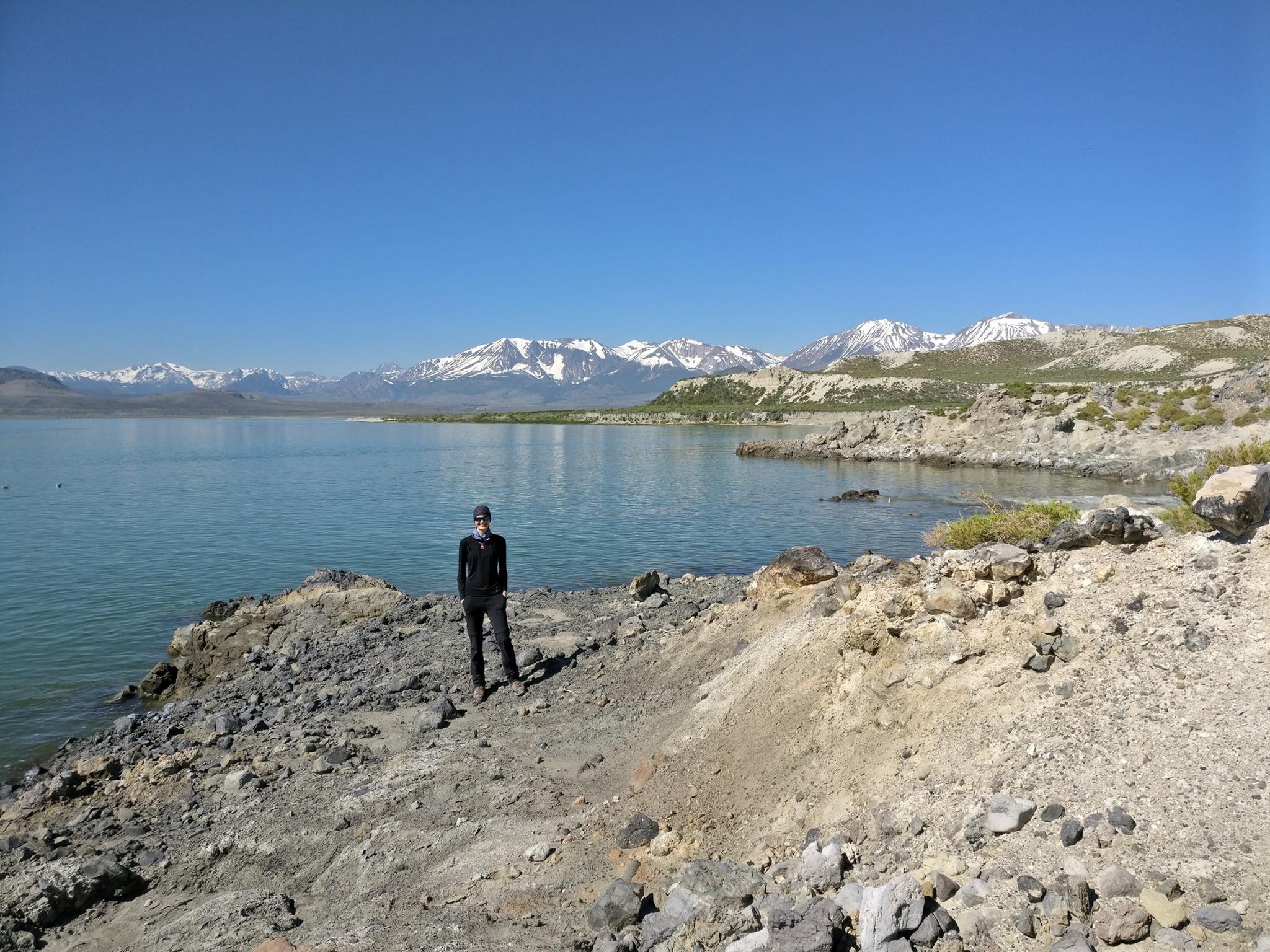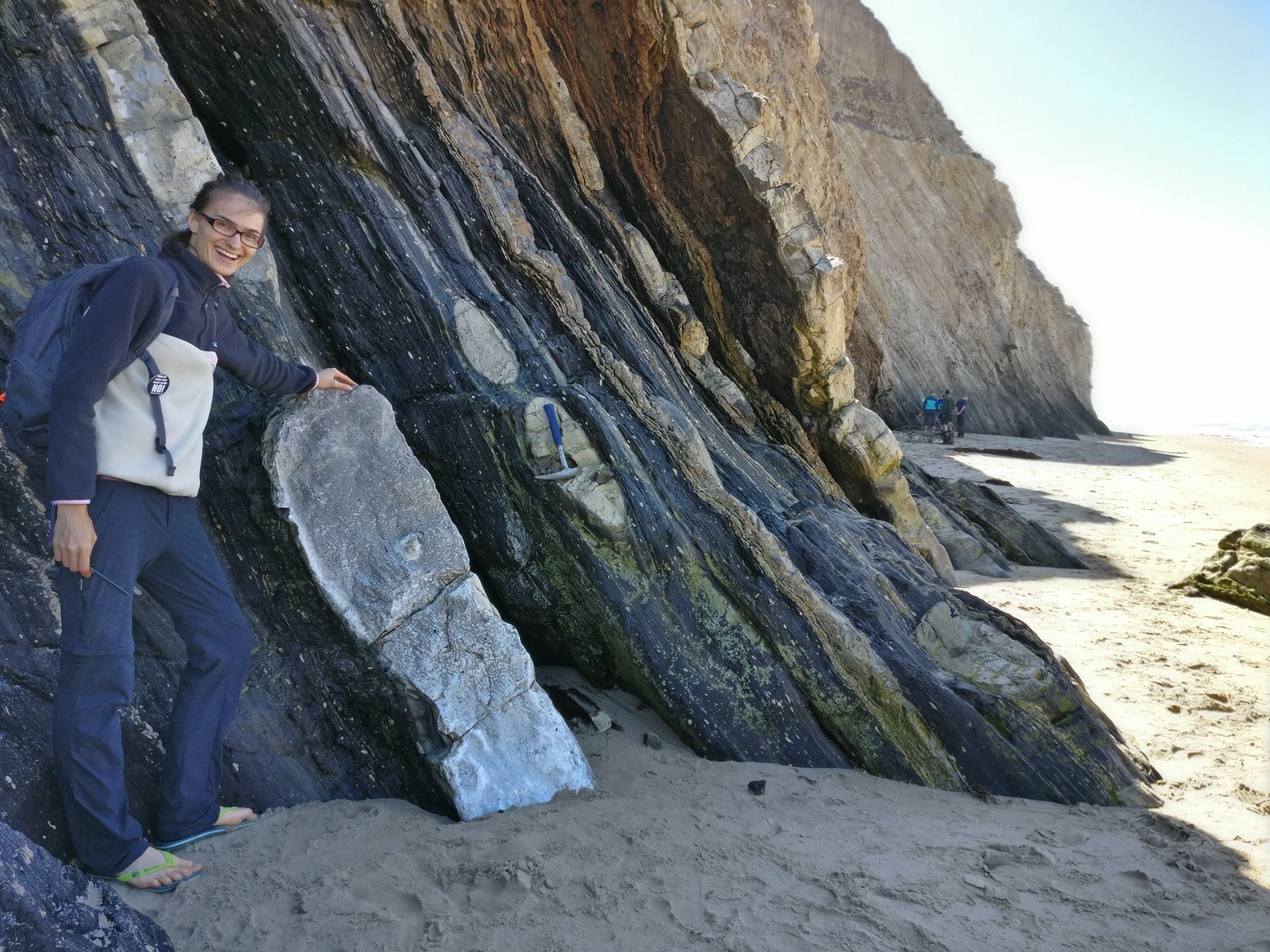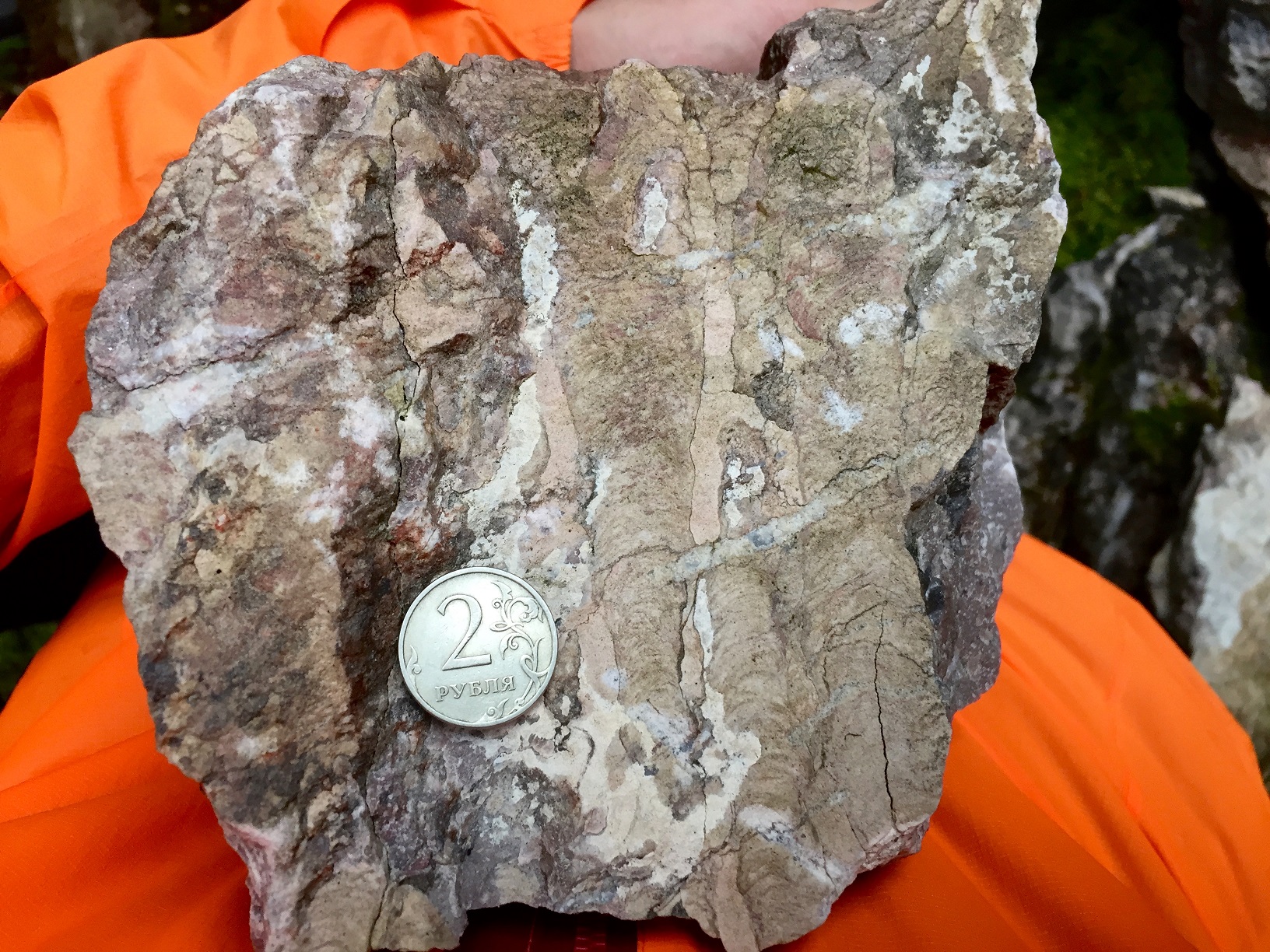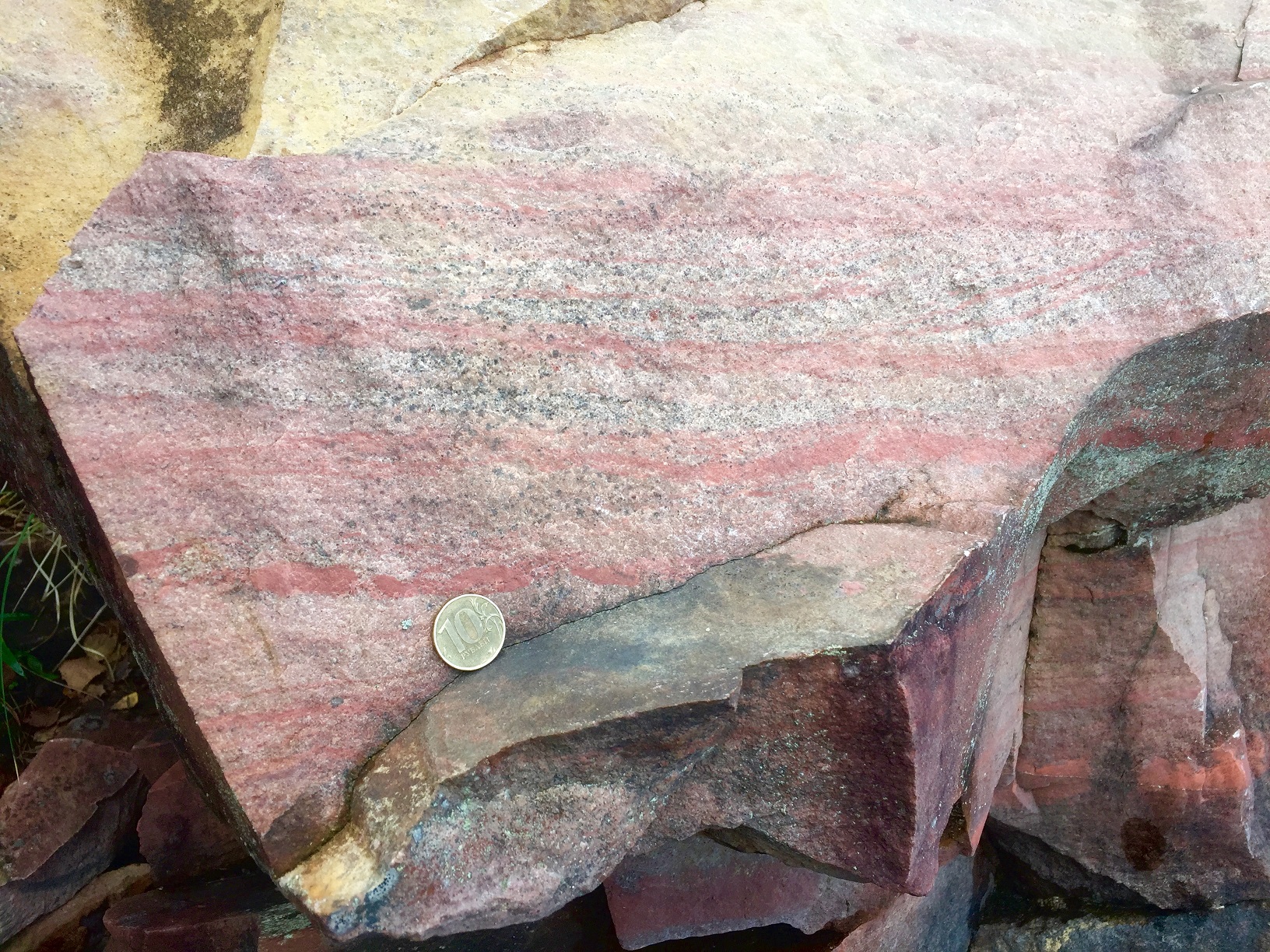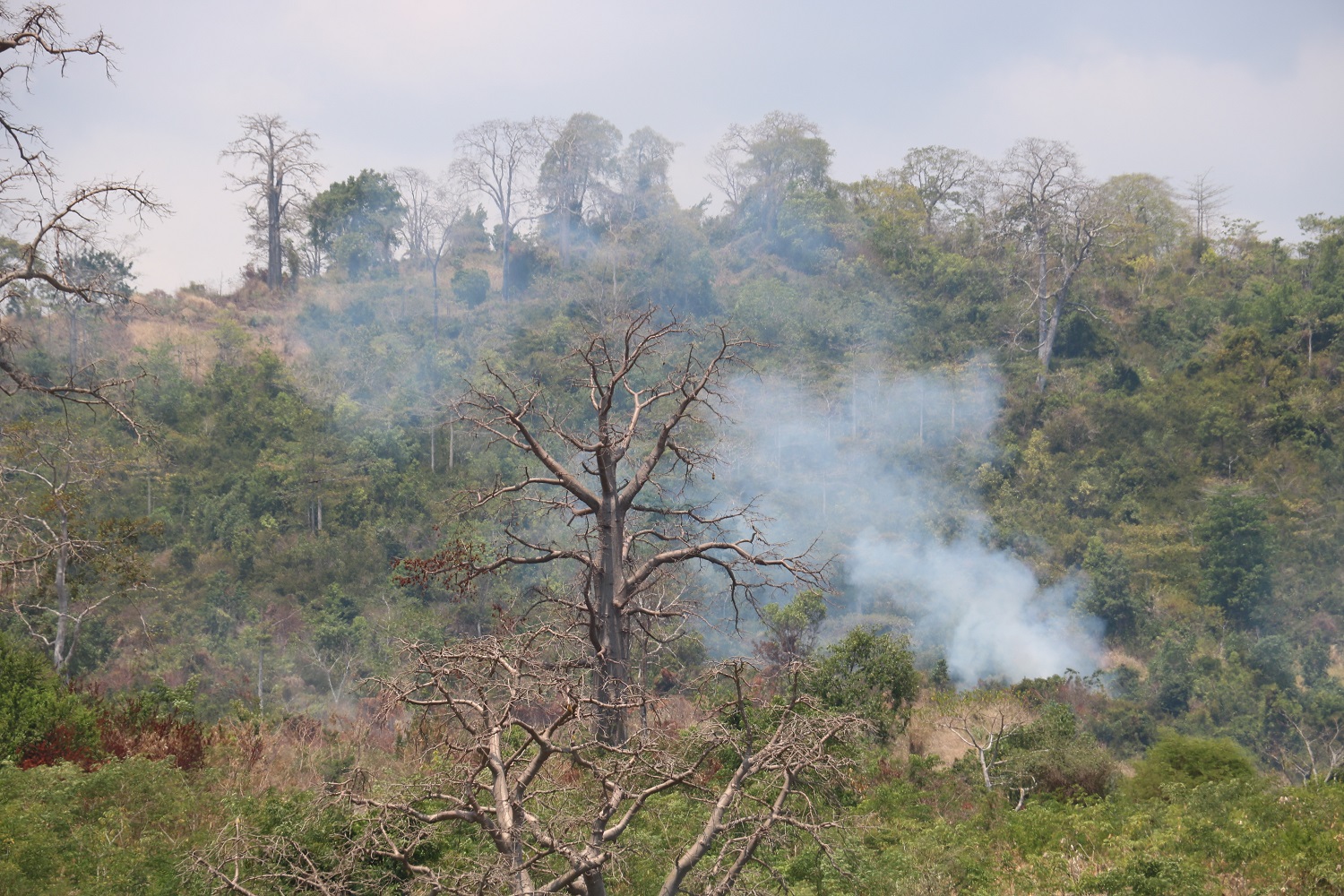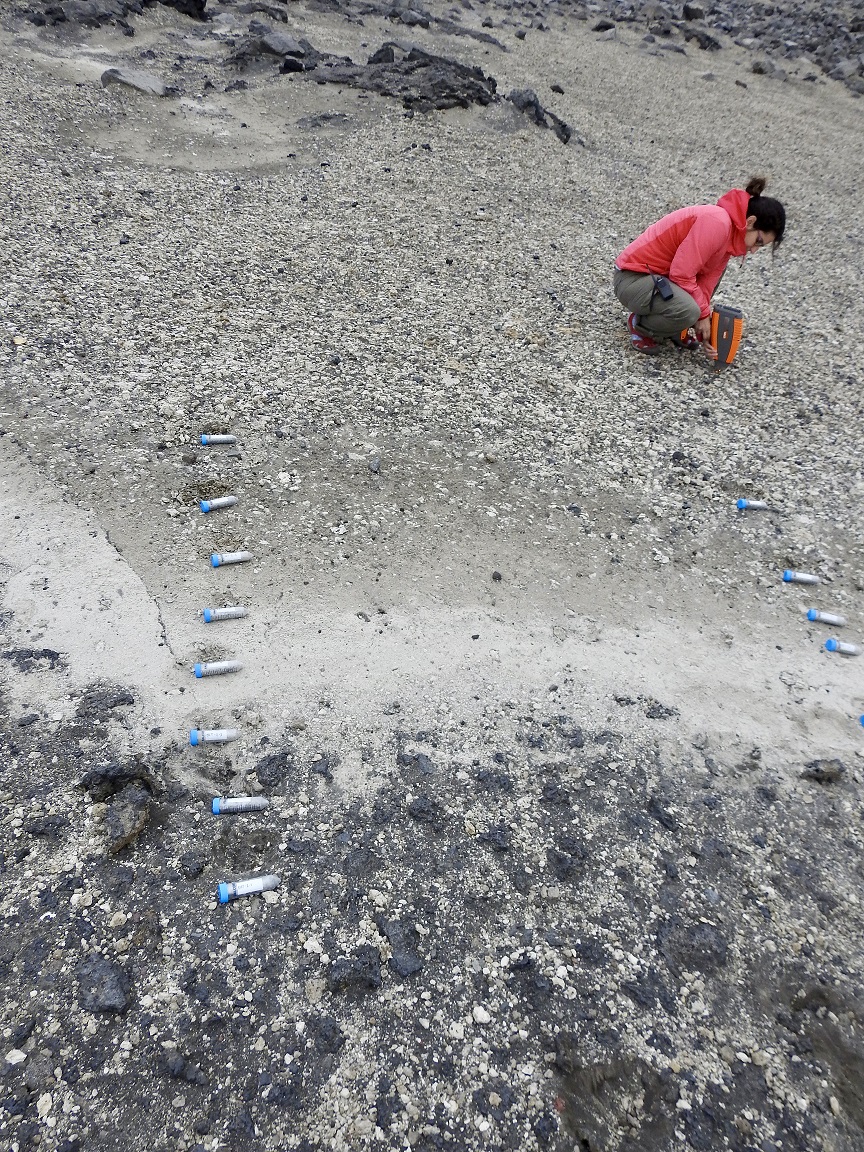|
Fall 2017
Where in the World are our Astrobiologists?
Ask an Astrobiologist and they will tell you that, quite often, you will be sweating your weight in water, feeling chilled to the bones, and getting your hands dirty. See below to learn about where our students and faculty have been traveling to for science!
Jana Meixnerova, UWAB Dual-Title student in ESS/Astrobiology, participated in the International Geobiology Course in California. The group spent the first week doing field work in the Sierra Nevada.
Top left shows Jana during one of the most exciting moments of her field trip, when she disembarked from the boat onto the Paoha Island in Mono Lake. Apart from the magnificent views of the mountains, she was surrounded by the omnipresent, pungent smell of hydrogen sulfide escaping from local hydrothermal hot springs.
Top right shows her discovery of one such boiling hot spring, which was completely covered in a thick, red microbial mat. In the second week, Jana continued her field work on the beautiful California coast around Santa Barbara.
Jana's happiest moment is captured in the bottom photo, where she is making stratigraphic investigation of the Monterrey Formation and observing perhaps the most famous phosphorite nodules in the world.
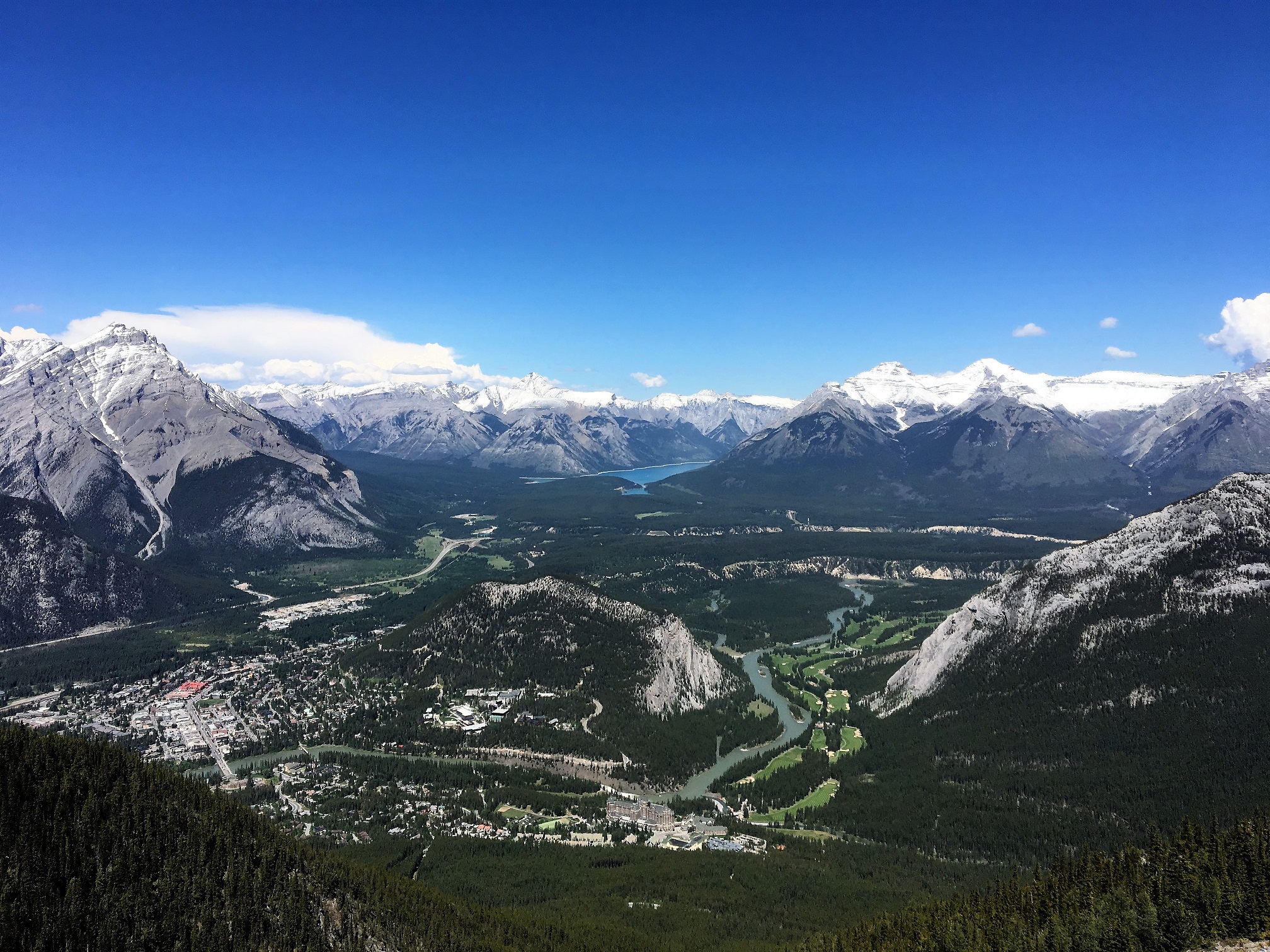 This is not photoshopped! Graduate student Chloe Hart and Professor Drew Gorman-Lewis, both in ESS/Astrobiology, traveled to Banff National Park in Alberta, Canada, for the Geobiology 2017 meeting. The picture above is the view from Sulphur Mountain, overlooking the town of Banff. Lake Minnewanka can be seen in the distance.
Michael Kipp, ESS/Astrobiology Dual-Title student, participated in the COST Origins "Early Earth & Life" field course that visited several sites on the Fennoscandian Shield in Karelia, Russia. Some of the highlights included seeing ~2 billion year old stromatolites (Picture 2) and some of the world's oldest red beds (Picture 3). Picture 1 shows geologists (Mike is in the orange jacket) walking down to an outcrop at the Suna River.
Atmospheric Sciences/AB student Michael Diamond traveled to São Tomé this August to study how biomass burning smoke from the African continent affects clouds, and thus regional energy balance, over the southeast Atlantic Ocean. The picture of smoke is from small-scale burning on the north side of São Tomé. On the right, we have Michael aboard NASA's P-3 Orion aircraft during a research flight.
This is not photoshopped! Graduate student Chloe Hart and Professor Drew Gorman-Lewis, both in ESS/Astrobiology, traveled to Banff National Park in Alberta, Canada, for the Geobiology 2017 meeting. The picture above is the view from Sulphur Mountain, overlooking the town of Banff. Lake Minnewanka can be seen in the distance.
Michael Kipp, ESS/Astrobiology Dual-Title student, participated in the COST Origins "Early Earth & Life" field course that visited several sites on the Fennoscandian Shield in Karelia, Russia. Some of the highlights included seeing ~2 billion year old stromatolites (Picture 2) and some of the world's oldest red beds (Picture 3). Picture 1 shows geologists (Mike is in the orange jacket) walking down to an outcrop at the Suna River.
Atmospheric Sciences/AB student Michael Diamond traveled to São Tomé this August to study how biomass burning smoke from the African continent affects clouds, and thus regional energy balance, over the southeast Atlantic Ocean. The picture of smoke is from small-scale burning on the north side of São Tomé. On the right, we have Michael aboard NASA's P-3 Orion aircraft during a research flight.
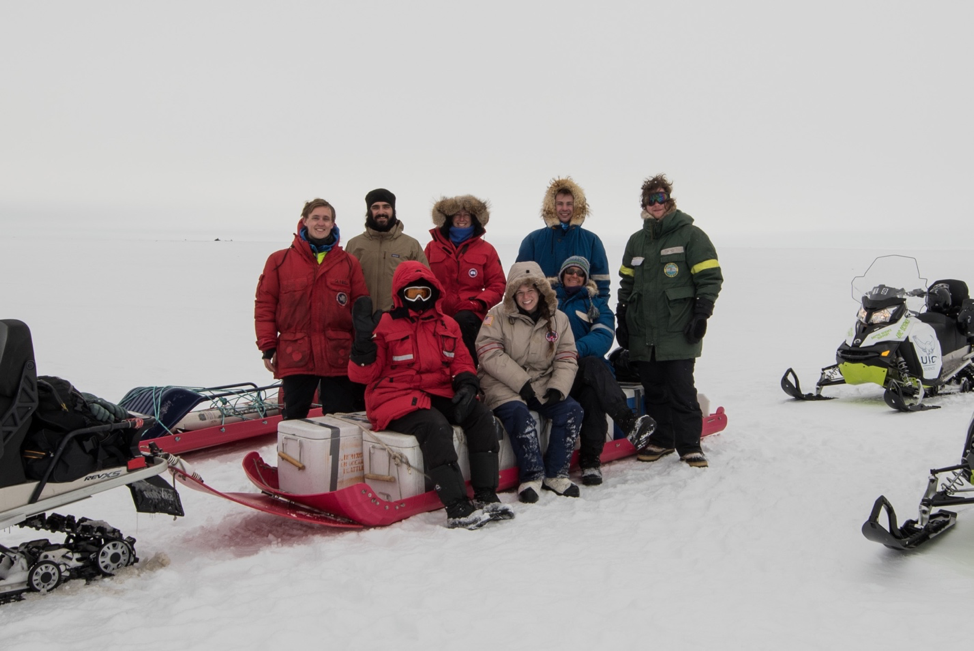 Members of the Deming/Young Labs recently completed a field expedition to Utqiaġvik (Barrow), Alaska, to collect samples from frozen environments that contain microbially inhabited brines: sea ice and permafrost (cryopegs or ancient brine buried in frozen soil). The environments sampled serve as analogues to those found on icy moons with salty oceans (sea ice) and in Martian soil (cryopegs). Members of the Deming/Young labs are pictured in above at the sea ice site near Barrow, Alaska, in May 2017.
Back row, left to right: Anders Torstensson, Manu Bedrossian (Caltech), Jodi Young (Oceanography/AB), Max Showalter (Oceanography/AB), and Zac Cooper (Oceanography/AB). Front row: Jody Deming (Oceanography/AB), Hannah Dawson (Oceanography/AB), and Shelly Carpenter.
Members of the Deming/Young Labs recently completed a field expedition to Utqiaġvik (Barrow), Alaska, to collect samples from frozen environments that contain microbially inhabited brines: sea ice and permafrost (cryopegs or ancient brine buried in frozen soil). The environments sampled serve as analogues to those found on icy moons with salty oceans (sea ice) and in Martian soil (cryopegs). Members of the Deming/Young labs are pictured in above at the sea ice site near Barrow, Alaska, in May 2017.
Back row, left to right: Anders Torstensson, Manu Bedrossian (Caltech), Jodi Young (Oceanography/AB), Max Showalter (Oceanography/AB), and Zac Cooper (Oceanography/AB). Front row: Jody Deming (Oceanography/AB), Hannah Dawson (Oceanography/AB), and Shelly Carpenter.
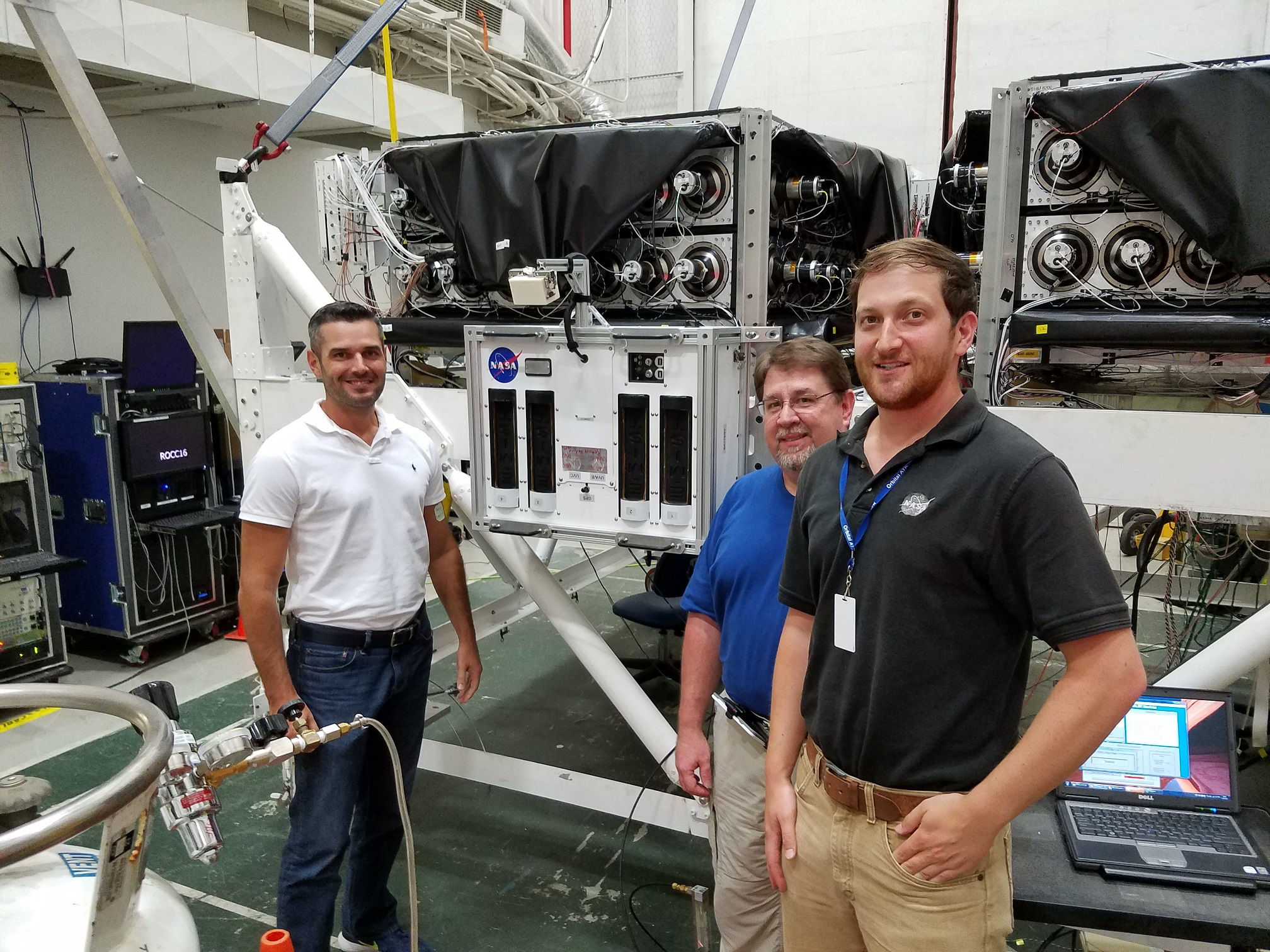 NASA Ames Space Biosciences researcher and UWAB alumnus David J. Smith (Principal Investigator) and NASA Kennedy Space Center engineers Michael Lane and Leandro James traveled to the Columbia Scientific Balloon Facility in Palestine, TX, from July 26-31, 2017 for E-MIST payload integration with the Super TIGER II Long Duration Balloon mission that will launch from Antarctica in December 2017. The E-MIST piggyback experiment will expose 5 resilient strains of microorganisms to the polar stratosphere to examine how spacecraft contaminants might respond to the Mars environment. The ultralong duration balloon mission is expected to stay afloat at an altitude of over 120,000 ft. for over 60 days in the Antarctic stratosphere. E-MIST is supported by a research grant from the NASA Planetary Protection Office, the NASA Balloon Program Office (Wallops Flight Facility) and the National Science Foundation’s Antarctic Support Contract.
In photo, from left to right: Leandro James, Michael Lane, and David J. Smith.
ESS/AB alumna Elena Amador went to Iceland this past July with her NASA PSTAR group from Georgia Tech. Elena's group is studying the correlation between mineralogy and biological activity in several fresh volcanic eruptions. The goal is to understand where the best sampling locations are when one has a limited number of samples one can take--we are hoping mineralogy and other remotely sensed parameters can be used to guide the most relevant locations for biological activity. Elena participated both in the field and in the laboratory at the University of Aukreyri, where she measured ATP concentration within their collected samples.
Left: Professor Roger Buick (ESS/AB) investigates 2.65 billion year old aeolian cross-bedded sandstones (relics of dunes formed from wind-blown sand) near Koegas, South Africa, in the company of a spiny Quiver Tree (giant aloe). Right: ESS/AB graduate student Erik Goosmann stands on the sandstones.
Right: ESS/AB graduate student Erik Goosmann writes notes while sitting on a 2.9 billion year old pahoehoe basalt lava flow at Tobolsk in Swaziland prior to sampling for paleobarometry. Left: Professor Roger Buick smashes the basalts to obtain the samples.
NASA Ames Space Biosciences researcher and UWAB alumnus David J. Smith (Principal Investigator) and NASA Kennedy Space Center engineers Michael Lane and Leandro James traveled to the Columbia Scientific Balloon Facility in Palestine, TX, from July 26-31, 2017 for E-MIST payload integration with the Super TIGER II Long Duration Balloon mission that will launch from Antarctica in December 2017. The E-MIST piggyback experiment will expose 5 resilient strains of microorganisms to the polar stratosphere to examine how spacecraft contaminants might respond to the Mars environment. The ultralong duration balloon mission is expected to stay afloat at an altitude of over 120,000 ft. for over 60 days in the Antarctic stratosphere. E-MIST is supported by a research grant from the NASA Planetary Protection Office, the NASA Balloon Program Office (Wallops Flight Facility) and the National Science Foundation’s Antarctic Support Contract.
In photo, from left to right: Leandro James, Michael Lane, and David J. Smith.
ESS/AB alumna Elena Amador went to Iceland this past July with her NASA PSTAR group from Georgia Tech. Elena's group is studying the correlation between mineralogy and biological activity in several fresh volcanic eruptions. The goal is to understand where the best sampling locations are when one has a limited number of samples one can take--we are hoping mineralogy and other remotely sensed parameters can be used to guide the most relevant locations for biological activity. Elena participated both in the field and in the laboratory at the University of Aukreyri, where she measured ATP concentration within their collected samples.
Left: Professor Roger Buick (ESS/AB) investigates 2.65 billion year old aeolian cross-bedded sandstones (relics of dunes formed from wind-blown sand) near Koegas, South Africa, in the company of a spiny Quiver Tree (giant aloe). Right: ESS/AB graduate student Erik Goosmann stands on the sandstones.
Right: ESS/AB graduate student Erik Goosmann writes notes while sitting on a 2.9 billion year old pahoehoe basalt lava flow at Tobolsk in Swaziland prior to sampling for paleobarometry. Left: Professor Roger Buick smashes the basalts to obtain the samples.
Return to Front Page |

